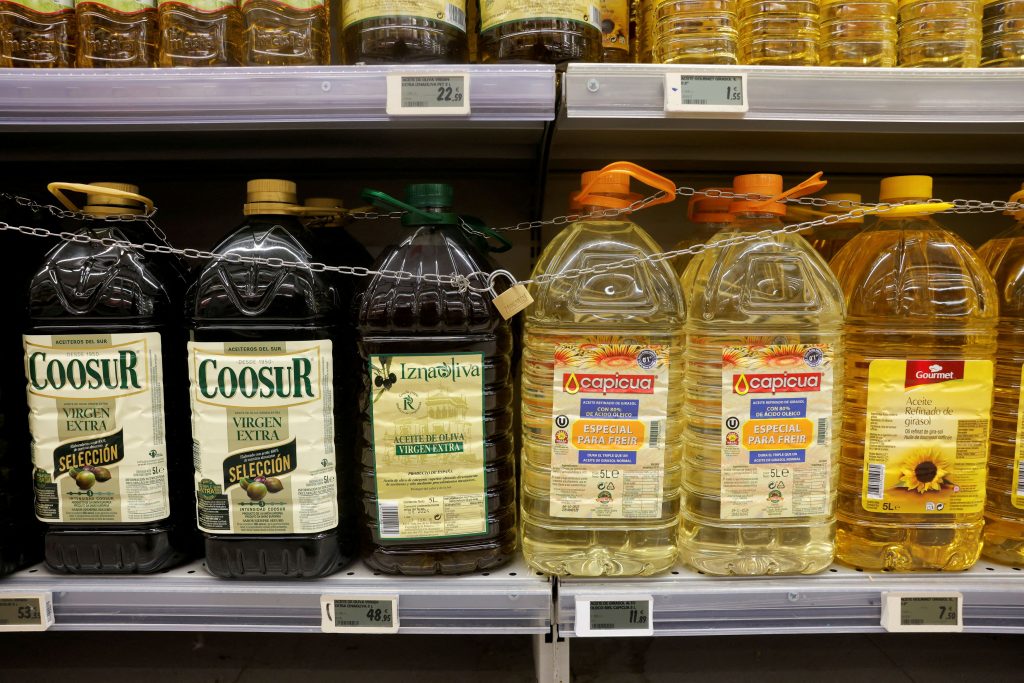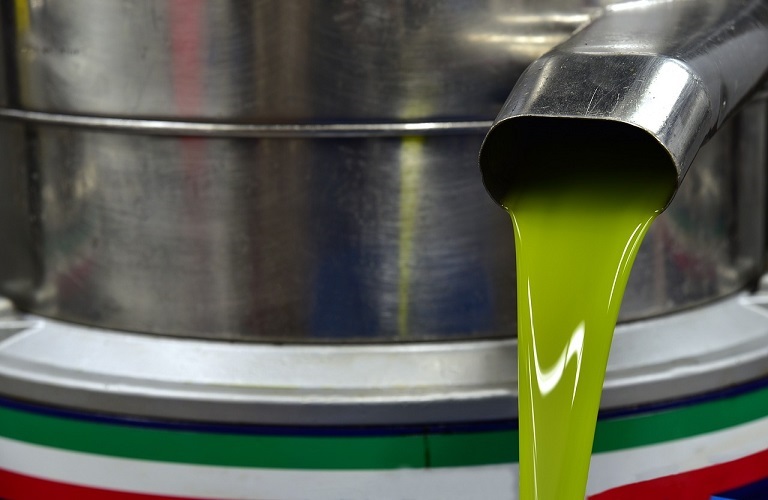As 2025 begins, producer prices for olive oil have dropped dramatically, driving some Greek producers to hold back on sales until later in the year, says a report at OT.gr.
In Greece, prices barely surpass €5 per kilogram, making sales unprofitable for many farmers.
Meanwhile, Spain, a key player in the global olive oil market, is seeing similar struggles. Prices have fallen by 28.9% compared to last year. At one point prices had gotten so high that oil was protected under padlock, at the supermarket.
Since Spanish pricing influences the rest of the EU market, the ripple effects are being felt across other producing countries, including Greece and Italy.

Olive and sunflower oil bottles are displayed for sale, protected by a padlock and a chain to prevent theft in a Tu Super Suma supermarket in Malaga, Spain, October 23, 2023. REUTERS/Jon Nazca/File Photo
Challenges for Consumers
For consumers, the high prices at grocery stores are not expected to drop immediately. Olive oil stocks from 2024, purchased at significantly higher prices, are still being sold. Market experts predict that any relief in retail prices will only appear gradually over the coming months, likely by spring, as businesses clear out older inventory.
A Mixed Outlook for Olive Oil Production
The latest data from the International Olive Council (IOC) shows that global production for 2023/24 decreased by 7%, totaling 2.564 million tons. Consumption also fell, reaching 2.78 million tons.
However, forecasts for the 2024/25 season are more optimistic. Global production is expected to increase by 32% to 3.375 million tons. Greece, which experienced a 49% drop in production last year, aims for a recovery with a projected output of 250,000 tons. Spain and Italy are also set to rebound, with Spain expected to produce 1.29 million tons and Italy 224,000 tons.

Why It Matters
Olive oil is not just a staple of Greek cuisine but also a key export product that supports thousands of farmers and businesses. The current pricing challenges threaten not only livelihoods but also the product’s appeal to consumers. Encouraging people to return to olive oil as a regular purchase is vital for the industry’s recovery.
The Road Ahead for Olive Oil
With global consumption projected to rise by 10% this year to 3.064 million tons, the olive oil market holds potential for growth. Yet, producers, retailers, and consumers must navigate the current volatility carefully.
As the industry grapples with these challenges, 2025 will be a pivotal year, particularly in Greece, where the sector remains a symbol of tradition, culture, and economic resilience.


